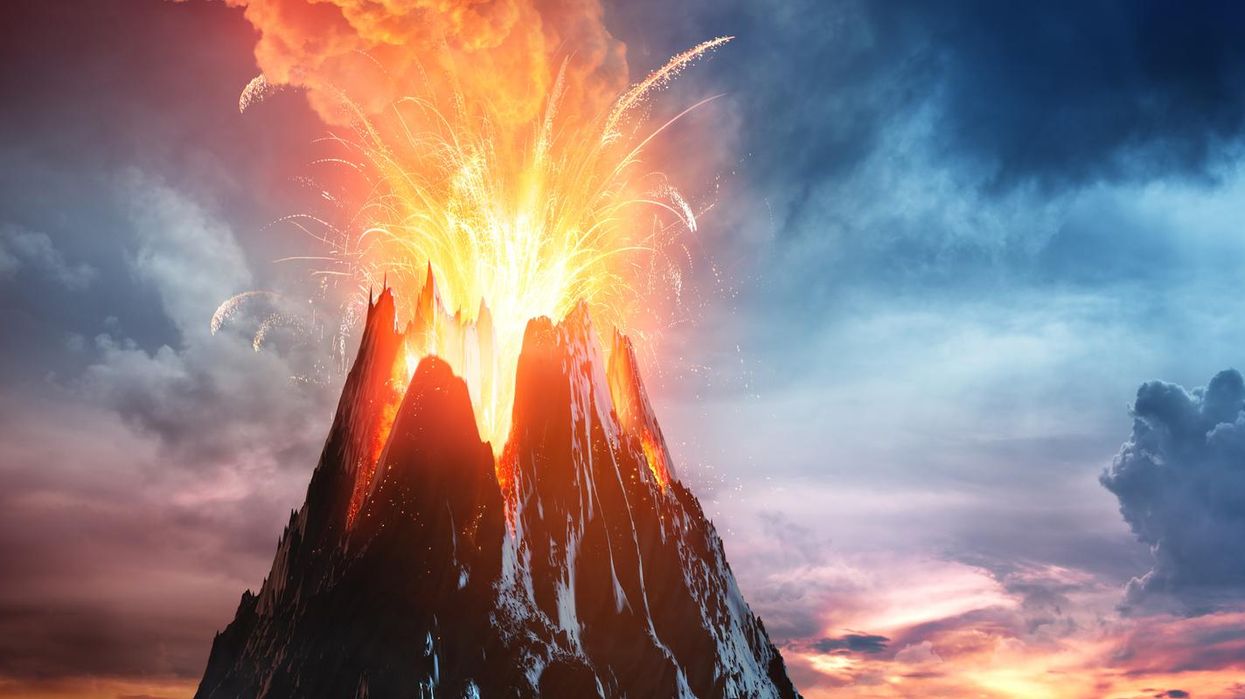News
Kelly Martin
Oct 24, 2017

Picture:
RomoloTavani / iStock
There are a few things that could end all life on earth; antibiotic resistant super-bugs, a colossal asteroid striking the planet from space, overpopulation and climate change to name a few.
America's sleeping supervolcano in Yellowstone Park recently made headlines as another possible cause for word destruction, but what are the odds that it will end life as we know it?
Scientist Kelly Martin took to Quora to discuss the possibility of our annihilation.
When is the Yellowstone supervolcano going to erupt?
No one really knows. The last three big eruptions at Yellowstone were 2.1 million, 1.3 million, and 630,000 years ago. That’s intervals of 800,000 and 670,000 years, and an as-yet-unfinished interval of 630,000 years. Based on so few data points, we cannot say what the statistically expected recurrence interval is with any degree of precision. A qualitative guess might yield an estimated recurrence interval of ~500,000–1,000,000 years, but that is not a good scientific answer.
Additional data along the hotspot track leads the USGS to estimate that there have been “15 to 20 caldera-forming eruptions” along the hotspot track from “western Idaho to Yellowstone within the past 16.5 million years.” That is an average of one large eruption every ~825,000–1,100,000 years. Knowing that, the last few eruptions seem anomalously close together. Does that mean these eruption recurrence intervals were unusual, and the next one will be longer? (say, closer to 1 million years after the last eruption, which is ~370,000 years from now)? Or that the eruptions are getting more frequent, and the next one will be closer in time to the last one? (say, anytime after 600,000 years since the last one, which is any day now)?
Volcanoes are not alarm clocks or metronomes. They are complex systems affected by both long and short term earth processes. As scientists, we are only scratching the surface (literally) in our understanding of the Earth.
The recent study that has been picked up by the news media (e.g., Yellowstone supervolcano could blow faster than thought, destroy all of mankind) tells us little to nothing about when the supervolcano could erupt. Rather, the study shows that the last eruption occurred faster than previously thought. Large caldera eruptions are usually preceded and followed by smaller non-explosive eruptions of lava, significant shifting of the overlying land, earthquakes, etc. Previously, researchers thought that these changes spanned >1000 years. That means any large explosive eruption would come with a lot of warning (probably centuries). What the recent study shows is that the events leading up to and following the previous eruption may have spanned decades rather than centuries. If the eruption and its precursors can really happen that quickly, we would have significantly less warning of a catastrophic event. That warning should still be decades. But the difference between decades and centuries is important.
Oh, and we also need to remember that the Yellowstone caldera has had numerous non-explosive eruptions over its lifespan. The last rhyolitic lava flow was only ~70,000 years ago. So it is possible for Yellowstone to ‘erupt’ without it producing the explosive event that could wipe out a lot of North America. It’s only the big explosive events that we need to worry about.
Top 100
The Conversation (0)













